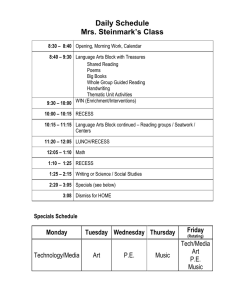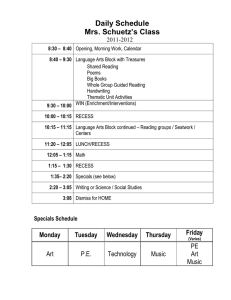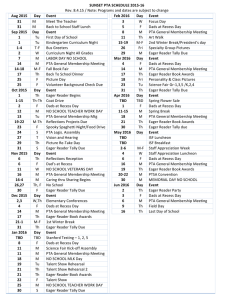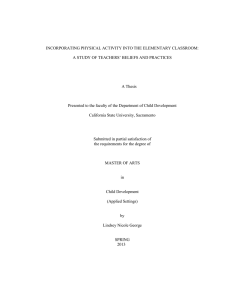Position Statement Physical Activity
advertisement
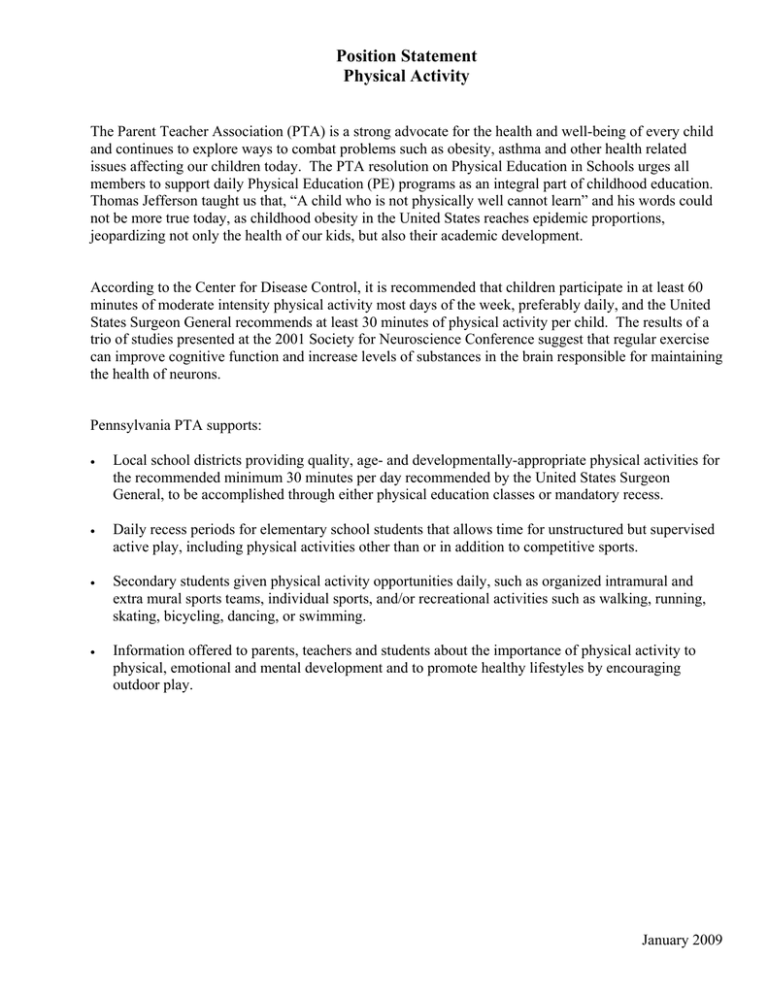
Position Statement Physical Activity The Parent Teacher Association (PTA) is a strong advocate for the health and well-being of every child and continues to explore ways to combat problems such as obesity, asthma and other health related issues affecting our children today. The PTA resolution on Physical Education in Schools urges all members to support daily Physical Education (PE) programs as an integral part of childhood education. Thomas Jefferson taught us that, “A child who is not physically well cannot learn” and his words could not be more true today, as childhood obesity in the United States reaches epidemic proportions, jeopardizing not only the health of our kids, but also their academic development. According to the Center for Disease Control, it is recommended that children participate in at least 60 minutes of moderate intensity physical activity most days of the week, preferably daily, and the United States Surgeon General recommends at least 30 minutes of physical activity per child. The results of a trio of studies presented at the 2001 Society for Neuroscience Conference suggest that regular exercise can improve cognitive function and increase levels of substances in the brain responsible for maintaining the health of neurons. Pennsylvania PTA supports: • Local school districts providing quality, age- and developmentally-appropriate physical activities for the recommended minimum 30 minutes per day recommended by the United States Surgeon General, to be accomplished through either physical education classes or mandatory recess. • Daily recess periods for elementary school students that allows time for unstructured but supervised active play, including physical activities other than or in addition to competitive sports. • Secondary students given physical activity opportunities daily, such as organized intramural and extra mural sports teams, individual sports, and/or recreational activities such as walking, running, skating, bicycling, dancing, or swimming. • Information offered to parents, teachers and students about the importance of physical activity to physical, emotional and mental development and to promote healthy lifestyles by encouraging outdoor play. January 2009 Background Summary What impact does a child’s physical health have on his or her ability to learn? We have known for thousands of years that there is a connection between health and learning. Over 2,300 years ago, Herophilus, the personal physician to Alexander the Great, said, When “health is absent, wisdom cannot reveal itself, art cannot become manifest, strength cannot fight, wealth becomes useless, and intelligence cannot be applied.” Today, we don’t have to take the word of a wise man; we can study the effects of physical activity and good health on a child’s ability to learn. And we have done so. The link between physical activity and academics is becoming painfully obvious as more and more studies reveal new information. We now know, for instance, that physical exercise is vital for maintaining the health of neurons, increasing cerebral blood flow, and for imparting a general sense of well being. Meanwhile there is little doubt that physical activity helps children improve in core NCLB subjects like reading and math and boosts their overall wellness. Many studies also link physical activity to better academic performance, emotional well being and lower tobacco use According to the U.S. Centers for Disease Control, the prevalence of obesity among children aged 6 to 11 more than doubled in the past 20 years, going from 6.5 percent in 1980 to 17.0 percent in 2006. An estimated 61 percent of obese young people have at least one additional risk factor for heart disease, such as high cholesterol or high blood pressure. In addition, children who are obese are at greater risk for bone and joint problems, sleep apnea, and social and psychological problems such as stigmatization and poor self-esteem. Our kids need to play now more than ever. Unfortunately, our elementary schools are cutting back on their physical education budgets to make way for higher investments in math, reading and science in order to comply with what the government monitors through its No Child Left Behind program. But our schools don’t necessarily have to spend more to give our children the exercise they need. Recess is one of the few times during the school day when children can interact freely with peers and get their little bodies into motion. It is a time to release pent up aggression and also to feel like they are in control. Free play encourages imagination and builds important leadership qualities in children that translate into positive self images. January 2009

